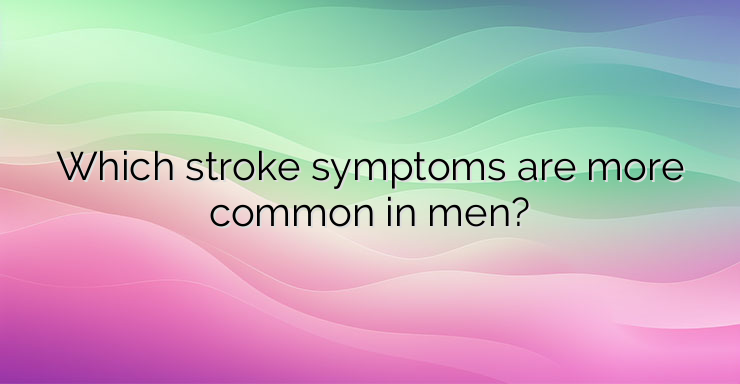What is a stroke? The disruption of blood circulation in the brain, as a result of which brain cells die, is called a stroke. Many signs of stroke are the same for men and women, however some symptoms of the condition are more common in men. Stroke is one of the leading causes of death in the world. Strokes occur more often and are more dangerous in women, while men have strokes at a younger age. Knowing all the symptoms, including those specific to each gender, would help one seek emergency medical attention for a casualty. What are the symptoms of stroke in men? Weakness or numbness on one side of the body are common symptoms of a stroke. However, studies show differences in how strokes affect men and women. The most common symptoms in men are: Difficulty keeping balance or poor coordination; Weakness on one side of the body; Numbness on one side of the body Women more often report atypical symptoms such as – dizziness, headache and behavioral changes such as confusion. Men can also experience these symptoms. However, because men are more likely to exhibit typical stroke symptoms, bystanders and medical professionals can recognize strokes more quickly in men, reducing the time between stroke and treatment. What are the early symptoms of a stroke? Ischemic stroke is the most common type of stroke. In an ischemic stroke, a plaque or blood clot blocks an artery in the brain. Hemorrhagic strokes are less common and occur when there is spontaneous bleeding in the brain. A person can also experience a transient ischemic attack or “mini-stroke,” short-term stroke-like symptoms that can serve as a warning sign that the condition is occurring. The most common signs of a stroke are: Distorted face. A stroke can cause numbness or weakness on one side of the face. Weakness in arms. A person with a transient ischemic attack or stroke may not be able to raise one or both arms above their head and hold them. Difficulty speaking. A person with a stroke may have difficulty speaking or their words may not make sense. If a person has any of these signs, they should seek emergency medical attention immediately. A stroke requires immediate treatment to prevent further brain damage. Other signs of a stroke include: Headache; Dizziness; Feeling faint. A person with a stroke may have several symptoms or just one. Bibliography: Centers for Disease Control and Prevention (CDC). Stroke Centers for Disease Control and Prevention (CDC). Men and stroke National Health Service (NHS). Know the signs of stroke


Leave a Reply